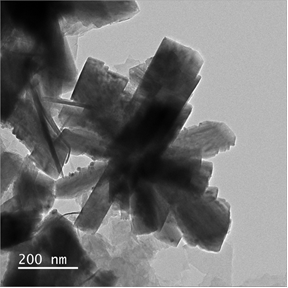A new copper-based catalyst with a star-shaped nanostructure has been developed by scientists through the controlled growth of copper oxide nanostructures on a sporopollenin template, offering a route to more sustainable industrial chemical reactions with the potential to reduce costs and environmental impact in sectors including pharmaceuticals and materials science.
To meet the need to replace harmful processes with environmentally friendly methods, scientists are working on materials that meet the growing need for environmentally friendly solutions in catalysis that can minimize the environmental impact of industrial chemical processes.
The method of controlled growth of copper oxide nanostructures on a sporopollenin template applied by scientists at the Institute of Nano Science and Technology (INST), an autonomous institution of the Department of Science and Technology (DST), created a “morning star” -Structure. where shell-shaped features of sporopollenin and polyethyleneimine (PEI) activation facilitate the synthesis of these unique nanostar shapes. This setup is optimized to carry out catalysis sustainably under “green” conditions.
Sporopollenin, which has a shell-like external structure as a framework, enables the growth of copper oxide rods that form a nanostar shape. The surface of sporopollenin is functionalized with PEI, which provides amine groups that are crucial for the nucleation and growth of the copper oxide nanostructures. The catalyst formed in this way is suitable for organic reactions and can be used in environmental remediation, nanoelectronics and surface-enhanced Raman spectroscopy (SERS). It has excellent efficiency in water without additives, outperforming traditional catalysts that often require high temperatures, additives or harsh solvents, and is reusable over five cycles.
By using spores – an abundant biomass waste – as the basis for high-quality catalysts, this innovation, published in Nanoscale 2024, demonstrates the transformation of waste into wealth, addressing a critical need. Its eco-friendly synthesis fits seamlessly with sustainable development goals and directly addresses environmental issues associated with traditional catalytic processes.
Link to publication: 10.1039/d4nr00390j
